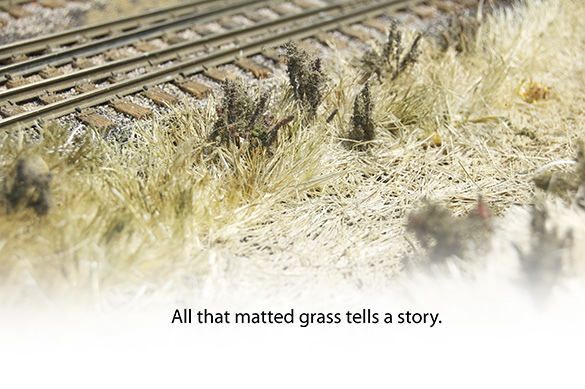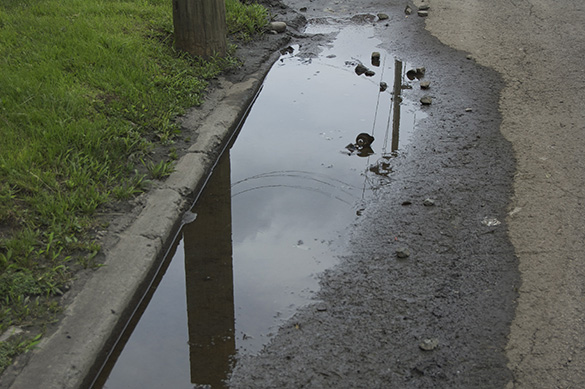 If you read this blog, you know I’m a fan of visual storytelling on a layout. I think of scenery, track and rolling stock as opportunities to convey deeper messages. Admittedly, this is a different mindset, however, the possibilities for storytelling is simply a matter of learning to see the opportunities.
If you read this blog, you know I’m a fan of visual storytelling on a layout. I think of scenery, track and rolling stock as opportunities to convey deeper messages. Admittedly, this is a different mindset, however, the possibilities for storytelling is simply a matter of learning to see the opportunities.
Over the weekend, I redid a section of scenery near the turnout to the Pole Track. The existing groundcover was too mediocre for my taste so I added taller sisal twine grass that matched the adjacent areas, along with other tall plants to represent thistles and milkweed. Simply doing this brought a cohesive look that did away with the careless hodge-podge appearance here.
This is a wide ditch that represents a remnant of an old canal. As such it could still carry water in the event of a prolonged hard rain, which is the back story to this developing scene, that all the matted grass on the bottom of the ditch was knocked down in a recent flash flood. While the water has receded, the tall grasses are still bent from the force of the water and silt. The scene is still under development in the opening photo and lacks a few details like evidence of silt deposits and maybe other debris that is critical in strengthening the story and resulting images.
Two Principles
With modeling that tells a deeper visual story it’s good to keep two principles in mind:
1. Tell a purposeful story.
I’ve shared here and here, how this line follows a river that’s prone to flooding and other antics that can disrupt traffic. Because of space constraints I chose not to model rural track that would show this relationship but I wanted to convey the impact water can have on the railroad and surroundings. I did model features of the old canal and this was an opportunity to put them to better use without the need to rip something out. If that had been the better option, I would have done it, as small sections of scenery are easily modified and replaced. However, such drastic measures weren’t required this time.
2. Tell a Logical Story.
Nothing looks phonier than the contrived scenarios hobbyists come up with, like the running passenger trying to catch a train that isn’t there. A key to convincing visual storytelling is to keep the scenario logical.
Because of the geography and proximity of my prototype line to the Whitewater River, a scene that shows the impact of water on the railroad is in keeping with the overall theme of the line. Matted grass in a drainage ditch is a logical aftermath of a hard storm. Rolling stock that is weathered according to its usage is another logical cause and effect story. An over-the-top weathered and sway backed wooden boxcar that looks like raw material for a bonfire, yet is still in service isn’t logical. It crosses the line from storytelling into fairy-tale caricature.
If logic isn’t your thing, then at least use restraint in developing a visual story scene. Something as mundane as a mud puddle conveys more power than the contrived imagery hobbyists are prone to use.
To conclude, there are layers of depth to this craft few explore. The majority skim the surface of what’s possible and never go further, which is too bad because going deeper is an excellent way to expand the enjoyment a layout brings. After writing this post I’ve made more progress on the scene and I’ll share that shortly.
Regards,
Mike

0 Comments